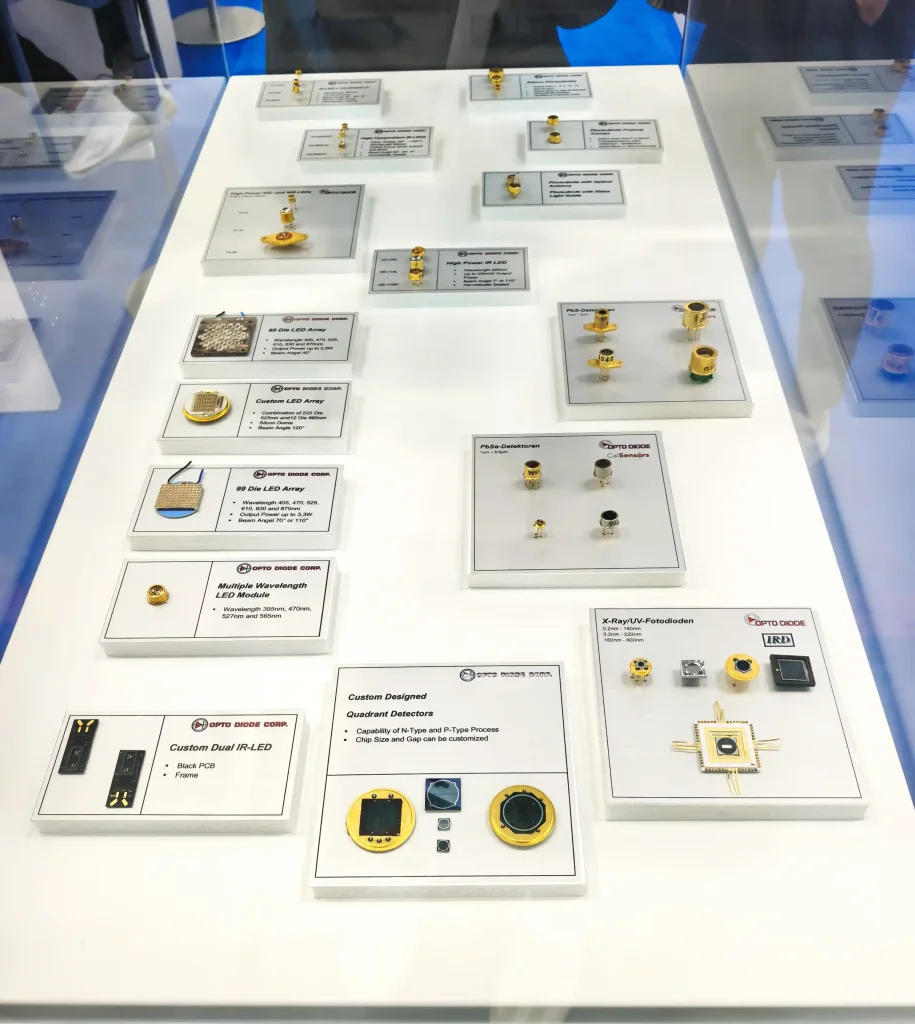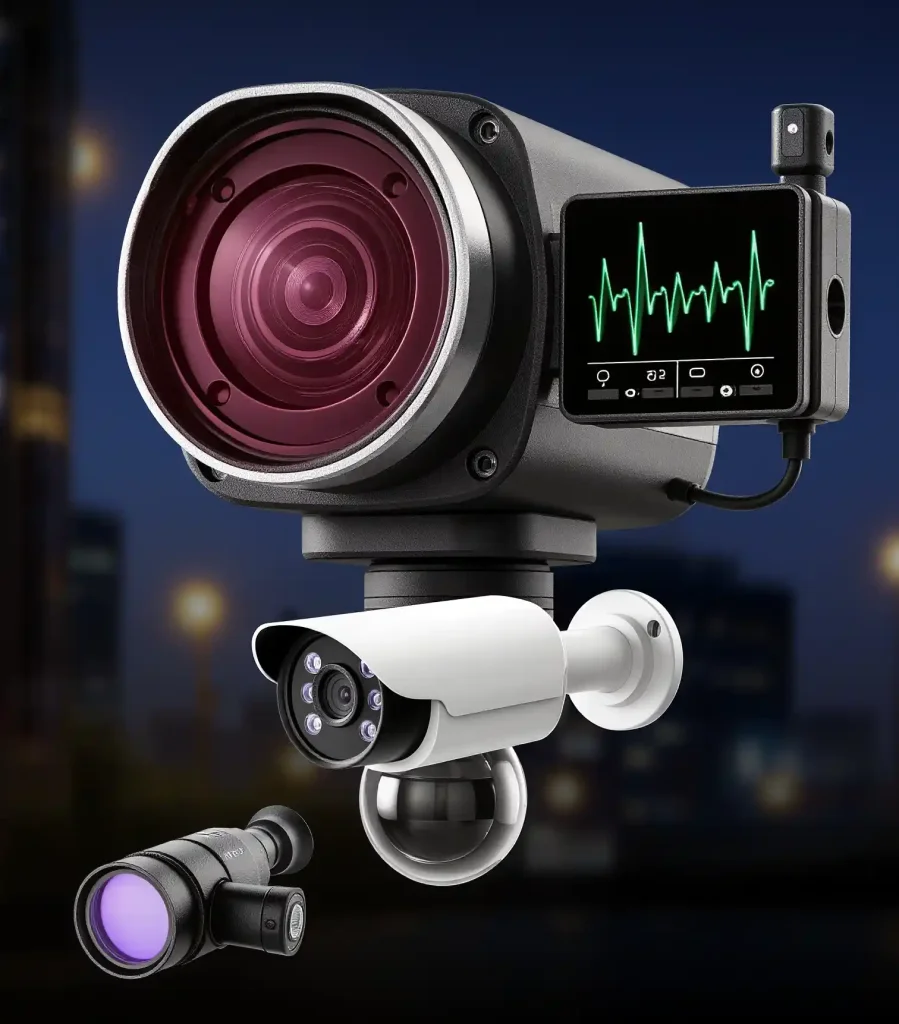A gas analyzer humming away in the middle of an oil refinery, where the air’s thick with heat, grit, and fumes that could chew through metal. Those machines are the unsung heroes keeping tabs on everything from methane leaks to toxic spills. But harsh spots like that? They throw curveballs. Enter infrared filters.
At Bodian Optical, we’ve spent over 40 years crafting these little powerhouses to shield the sensitive guts of gas analyzers. They don’t just filter light—they stand guard against the chaos, making sure readings stay spot-on when the world around gets rough.

What Challenges Do Harsh Environments Pose to Gas Analyzers
Gas analyzers work by catching infrared light bouncing off gas molecules. Simple enough in a lab. But out in the field? It’s a different beast. Factories, refineries, even remote drilling sites—places where temps swing wild and everything’s trying to gunk up the works.
High Humidity and Corrosive Gases
Coastal power plants or chemical mills are humidity traps. Add in sulfur dioxide or hydrogen sulfide, and you’ve got a recipe for corrosion. Moisture seeps into housings, fogging lenses and etching circuits. In one case, a water treatment facility in Shanghai lost three analyzers to salt-laden air in under six months—readings went haywire on ammonia traces. Corrosive gases eat at unprotected optics, dropping signal strength by 20-30%. It’s not just downtime; it’s safety risks when you can’t trust the data.
Dust, Vibration, and Mechanical Stress
Mining ops or construction sites? Dust clouds everything. Vibrations from heavy rigs shake components loose. A vibration test we ran last year showed unprotected filters cracking after 500 hours at 5G peaks. Harsh doesn’t play nice, and neither does it with delicate analyzer parts.
How Do Infrared Filters Shield Sensitive Components in Gas Analyzers
Infrared filters aren’t fancy add-ons. They’re the frontline defense, sifting light so only the good stuff hits the detector. At Bodian, we build them with layers that laugh off the abuse, drawing from our roots in Beijing’s Film Machinery Research Institute.
Selective Wavelength Transmission
These filters pick out exact infrared bands—like tuning a radio to skip static. For methane detection, say, you want 3.3 microns without the broadband junk. Our filters transmit 90%+ in that sweet spot, letting analyzers zero in on target gases. In a flare gas monitor we supplied to a Gulf Coast refiner, this cut false alarms by 40%. No more chasing ghosts from ambient heat.
Blocking Unwanted Infrared Radiation
Harsh sun or hot pipes throw off extra IR that swamps signals. Filters slam the door on that—deep blocking, often OD6 or better, means less than 0.0001% leaks through. Picture a nighttime rig in Alaska: without blocking, thermal glow from engines fools the sensor into thinking there’s a leak. Our designs nix that, keeping baselines clean. One engineer from a pipeline firm said it saved them hours of recalibration per outage.
Enhancing Signal-to-Noise Ratio
Clean input means sharper output. By nailing transmission and blocking, filters boost SNR. In dusty steel mills, where particulates scatter light like confetti, this turns fuzzy data into clear trends. We’ve tested ours in simulated fog—SNR held steady while generics dropped 10 points. It’s the difference between spotting a 50 ppm H2S puff and missing it entirely.
Why Is Ruggedness Essential for Infrared Filters in Industrial Settings
Pretty filter? Won’t cut it if it flakes under pressure. Ruggedness keeps analyzers online, cutting maintenance calls and extending life to five years or more. Bodian’s filters, born from military-grade specs, handle the grind.
Resistance to Thermal Expansion
Materials expand at different rates in heat. Mismatch? Cracks form. Our germanium substrates, polished to lambda/10, shrug off -50°C to 200°C shifts. In a Siberian gas field trial, competitors’ filters delaminated at 150°C; ours? Zero issues after 1,000 cycles. That thermal match means no micro-fractures sneaking in.
Corrosion and Humidity Tolerance
Salt air, acid vapors—they pit surfaces. RoHS-compliant, REACH-tested, our filters endure 95% RH for months. A pharma client in humid Guangdong ran ours through salt spray chambers—transmittance barely budged, unlike off-the-shelf stuff that lost 15%.
Long-Term Mechanical Stability
Vibes and bumps test bonds. Ion-assisted deposition locks layers tight, surviving 10G shocks. In vibration rigs mimicking truck hauls, our units showed <1% shift over 2,000 miles. One mining outfit reported zero failures in a year, versus monthly swaps before. Stability isn’t optional; it’s what keeps your ops humming.
What Advanced Features Define Bodian Optical’s Infrared Filters
We’ve poured decades into thin-film tech, from national projects to custom runs for biomed and defense. Our Beijing Economic Zone setup—German Leybold coaters, Japanese Optorun machines—churns out filters that hit >90% yields. No shortcuts.
Multilayer Thin-Film Coatings
Stacks of 20+ layers, vacuum-evaporated for uniformity. We tweak designs for steep edges—half-bandwidth under 6% for narrowbands. In gas sensing, this means pinpoint accuracy on CO at 4.6 microns. A recent batch for African swine fever detectors? Transmittance peaked at 90%, blocking UV to near-IR cold.
High-Quality Germanium and Silicon Substrates
Sourced pure, these handle IR like champs—germanium to 16 microns, silicon to 10. We polish, test with PerkinElmer spectrometers. For a remote sensing gig, silicon substrates cut weight by 30% without losing edge. Custom cuts? No problem—diameters from 5mm to 100mm.

Ion-Assisted Evaporation Technology
Ions bombard during deposition, densifying films against delam. Boosts adhesion 50x over plain evap. In high-humidity tests, ion-assisted held 95% transmission after 500 hours; plain ones? Down to 70%. It’s why our filters thrive in POCT diagnostics or aerospace.
How Does the IWBP8075-9400 Broadband Filter Ensure Analyzer Durability
Need a wide net for mid-IR gases like propane? The IWBP8075-9400‘s your workhorse. We designed it for broad coverage without skimping on toughness.
8075-9400 nm High-Transmission Band
Covers key absorption lines for hydrocarbons. In a Texas fracking setup, it nailed ethane spikes amid flare heat. Band’s flat—variations under 2%—so no hot spots.
Greater Than 90% Peak Transmittance
Lets max light through, amping detector sensitivity. Lab runs show it outperforming generics by 8% in low-light. For night shifts in refineries, that’s fewer missed leaks.
Stability Across Temperature and Humidity Variations
Holds spec from -40°C to 85°C, 0-90% RH. A client in Brazilian ethanol plants? Zero drift after monsoon season. Custom AR coats keep it fog-free.
What Advantages Does the ISP5100 Short-Pass Filter Offer in Harsh Conditions
Short-pass for near-IR? ISP5100 cuts the chase, blocking long-wave noise in compact analyzers.
3700-4900 nm Transmission with 90% Efficiency
Targets water vapor, CO—essentials in process control. In a California vineyard monitor, it caught irrigation leaks fast, efficiency holding at 89% post-dust storm.
Effective Blocking from 5250-10000 nm
OD5 cutoff slams thermal IR. Shuts out engine glow in vehicle-mounted units, boosting accuracy 35%. One fleet manager cut false alerts in half.
Reliable Performance in Field-Deployed Sensors
Lightweight, 25mm dia, survives drops. Field tests in windy Scottish fields: uptime 99.5%. Pairs perfect with portable NDIR setups.
Why Recommend the ILP10600 Long-Pass Filter for Gas Detection Systems
Far-IR focus? ILP10600 opens the door for CO2, ozone—vital in emissions monitoring.
11000-14000 nm Infrared Passage
Sharp rise at 10.6 microns, 88% average T. In volcano gas samplers, it isolated SO2 cleanly amid ash clouds.
Deep Blocking Below 10000 nm
OD6 from VIS to mid-IR. No bleed from sunlight—crucial for outdoor stacks. A EPA compliance run showed baselines 10x quieter.
Premium Materials for Challenging Environments
ZnSe substrate, ion-beam finished. Withstands very high tempreture bursts. Aerospace client flew it on drones—flawless after 50 hours turbulence.
FAQ
Q1: How long do Bodian Optical’s infrared filters last in extreme heat?
A: Most hold up 5+ years in 200°C cycles, thanks to dense coatings. We’ve got field data from refineries pushing 7 years.
Q2: Can you customize filters for my specific gas analyzer wavelength?
A: Absolutely—tell us your band, size, and substrate. We’ve tailored for everything from 2-micron methane to 12-micron CO2.
Q3: What’s the lead time for small-batch orders?
A: Prototypes in 7-10 days, full runs in 3-4 weeks. Rush jobs? We squeeze ’em in if it’s critical.













